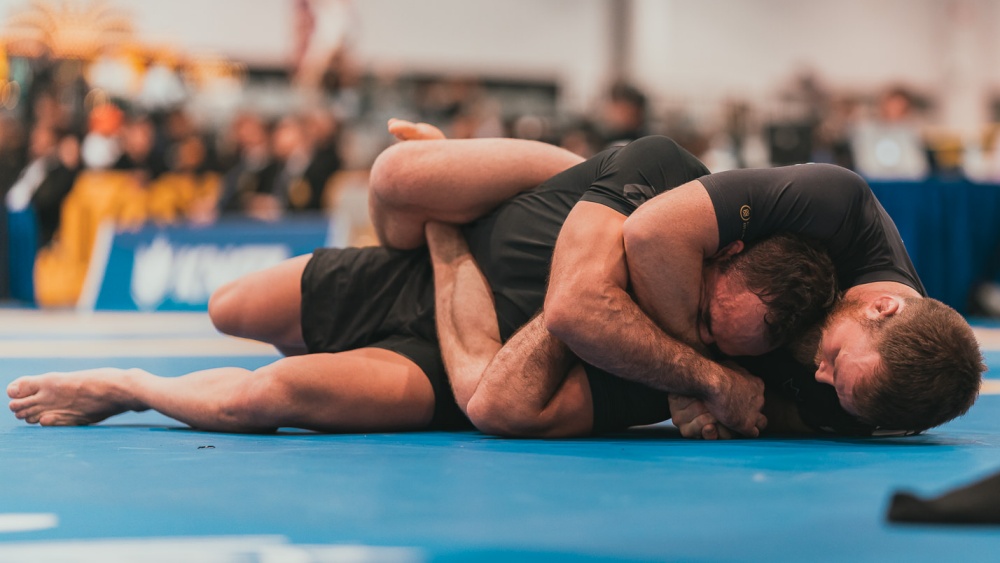Brazilian Jiu-Jitsu is a martial art that focuses on many aspects of grappling. Contrary to popular belief, not all matches are fought on the ground. In fact, many high-profile matches tend to stay on the feet, especially if both are comfortable with throws.
Every Brazilian Jiu-Jitsu match starts standing up. This means that grapplers of all levels should have some knowledge of takedowns so that they can stay offensive in the standing position. Today, we will talk about one of the most versatile takedowns in grappling, the single-leg takedown.
The Secret To Dictating Where A Match Goes
Takedowns are a must if you want to dictate the pace of a match. Joe Rogan said that fighters with strong takedown games can push the pace better because the takedown threat is always looming.
This is also the case in grappling competitions. Grapplers with strong takedowns are very difficult to deal with. This is why high-level wrestlers and Judokas are generally not allowed to compete in white belt competitions. They may not have advanced knowledge of Jiu-Jitsu, but their experience training other forms of grappling puts them a tier above total newbies.
Most BJJ practitioners nowadays like to pull guard, and with good reason. Pulling guard is an excellent third option for those who prefer groundwork at the onset of a match. Pulling guard also negates the threat of takedowns because you can’t throw someone already sitting on the mat.
While it may be adequate to use in most tournaments, pulling guard will not work in ADCC rules, where there are limitations on pulling straight to guard. It is not wrong to pull guard depending on how a match goes, but having some takedowns to round out your game is an absolute must to make you dangerous in every major position.
The Single-Leg Takedown
The single-leg takedown is a technique typically used in wrestling. It is characterized by grabbing an opponent’s leg (usually with both hands) with the intent of taking them down on the mat. Since the single leg only requires you to isolate a leg, it is a relatively simple technique to pull off and can be applied using various setups.
Another thing that’s great about the single-leg takedown is its versatility. It is one of the few techniques in grappling that’s equally effective in gi, no-gi, and even mixed martial arts. If you take the time to learn the single-leg takedown, you’ll have a powerful weapon regardless of your grappling style.
ADCC bronze medalist Lachlan Giles shows the basics of the single-leg takedown. He says that a nice low stance with one foot forward is helpful as it makes your shot less predictable. He prefers to teach the head inside single leg variation because he feels it is safer for grapplers of all levels.
Now onto the shot. A good tip here is to ensure that you have good posture as you shoot with your lead leg. Your posture is critical because a sloppy stance is more prone to sprawls. Similarly, your head should be on the same level as your spine. Do not look down when shooting for the single leg because your opponent can create separation by pushing you on the back of the head. If you apply these tips correctly, your single-leg entry should be an easy thing to do.
Now that we’ve covered the shot, let’s discuss how to finish the single-leg takedown. Once you grab the leg, it is always a good idea to push forward using your head. Doing so makes the leg lighter and thus makes it easier for you to lift it up.
Lachlan shows two basic ways to finish the takedown. If your opponent resists by sprawling back, you use the running the pipe finish by stepping your leg near your opponent as you drag the leg at an angle for the takedown.
If your opponent leans forward to counter the first finish, you can push them forward using your head as you lift their leg. You can finish the takedown by cupping the knee as you backstep or simply sweeping their leg. Try to be gentle when doing this because you can seriously injure someone with this finish.
Variations Vs. Techniques
Beginners fall into the habit of learning too much without focusing on mastery. The key to becoming an expert in a technique is to not only understand the nuances of the move but also to build the knowledge of when and how to use it. This means that if you can pull off the single-leg takedown from many positions, you’ll be able to maximize its potential because you are using the same technique over and over.
Learn as many entries and variations of the single leg, and you’ll be surprised at how effective it can be. We suggest that you do this if you are still in the early stages of your BJJ development because it is a smart and efficient approach to mastering a technique. Like what the great Bruce Lee said: “I fear not the man who has practiced 10,000 kicks once, but I fear the man who has practiced one kick 10,000 times.”
Once you are able to apply the single-leg takedown from various positions, that’s the time to expand your game and focus on similar or follow-up techniques to the single-leg takedown. Try this out, and let us know how it goes.
Conclusion
The single-leg takedown is by far our best recommendation for building a solid takedown game. Learning the single leg will give you a broader understanding of Jiu-Jitsu and elevate your confidence to stay on the offensive. Always try to drill this technique as consistently as you can, and slowly include the common defenses as you become more experienced. Don’t hesitate to reach out to your coach so you’ll have guidance in learning new techniques. Stay safe and keep on training!
You may also like:

















